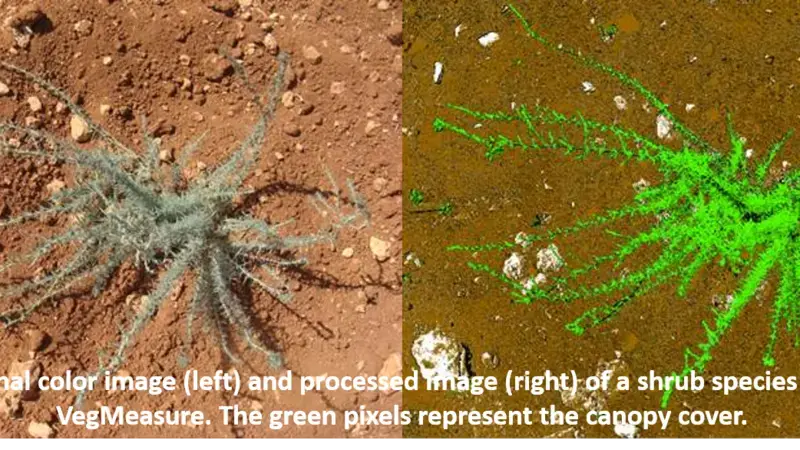Measuring rangeland degradation for greater resilience

Can new image analysis software inform the development of responsive support systems, strengthening the resilience of rangeland communities on the frontline of climate change?
Rangelands suffer from low productivity and increasing rates of degradation and desertification – challenges that are exacerbated by the impacts of climate change. Protecting pastoral communities is dependent on accurate assessments of grazable biomass. Without this information, governments are unable to decide on the amount of feed needed to maintain livestock production, for instance, or the measures required to support poor farmers during periods of prolonged drought.
Measuring canopy cover and biomass
It is widely assumed that plant biomass is positively correlated with canopy cover, but conventional techniques to measure canopy cover, often involving quadrat sampling in the field, can be time consuming, expensive, and generate detailed records in only a few locations worldwide – ill-suited to the development of robust and responsive support systems.
Non-destructive, accurate, and more rapid alternatives are urgently needed. One potential alternative, developed by scientists at ICARDA and Oregon State University, uses image processing software to determine rangeland ground cover from color digital images.
Vegmeasure quantifies areas of defined classes such as bare ground and vegetation using built-in algorithms. Its effectiveness was tested by a team of scientists from ICARDA and Tunisia’s Institut des Régions Arides, who measured the biomass and canopy cover of three plants across a 20 hectare (ha) research site in southern Tunisia: Artemisia herba-alba Asso. Rhanterium suaveolens Desf., and Stipa tenacissima L.
Can new image analysis software deliver?
Twenty tufts of each species were selected for measurement. Canopy cover was estimated using images taken by cameras pointed vertically downwards at a height of 1.25 meters. Clippings were then taken from half of the selected plants, which were dried at 105֯ C for 24 hours, and reweighed to obtain the dry biomass.
Results demonstrated a significant correlation between biomass and canopy cover for all three plant species: linear regression relationships were 0.46, 0.90, and 0.69 for A. herba-alba, R. suaveolens and S. tenacissima, respectively. The correlation is an encouraging development for more accurate and less destructive biomass measurements.
This research was supported by the CGIAR Research Program on Livestock.
The article is based on an article recently published in Botany Letters: ‘Measurement of the aboveground biomass of some rangeland species using a digital non-destructive technique.’
Author: Mounir Louhaichi, Range Ecology and Management Research Scientist (ICARDA).
